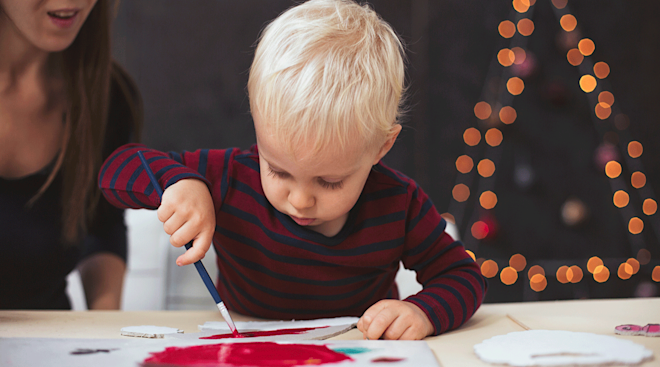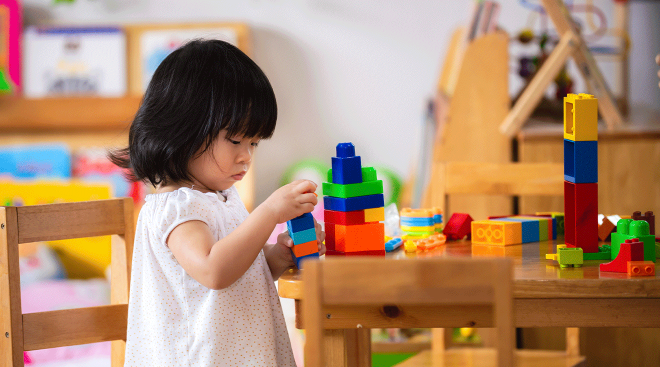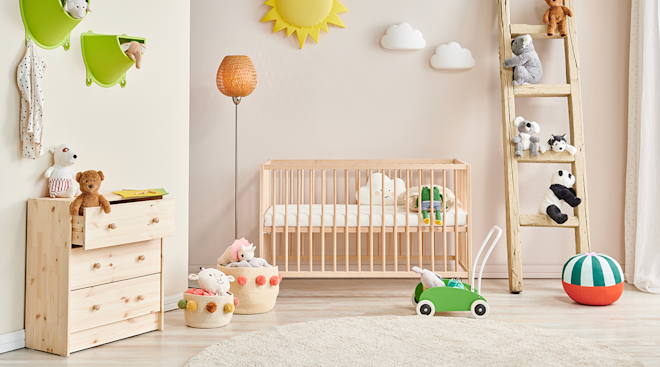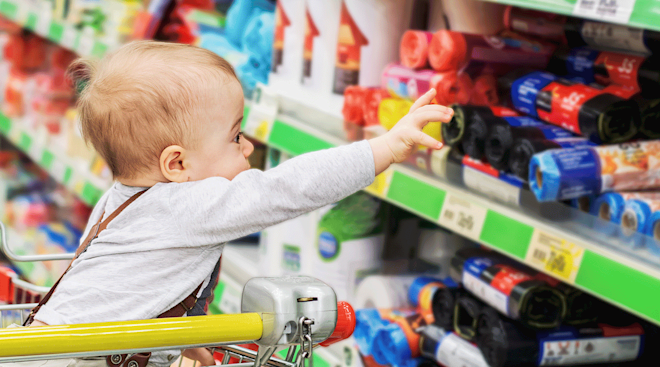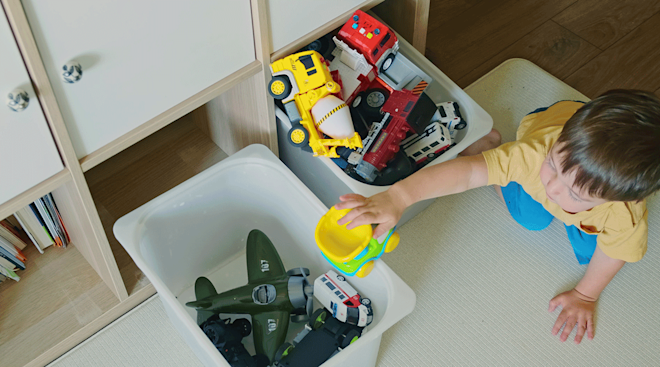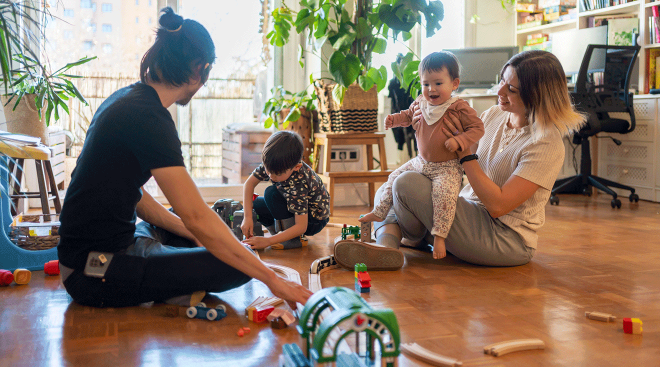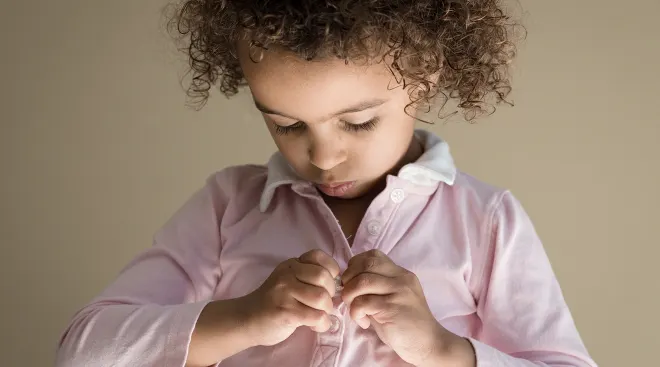How to Rein in a Fearless Toddler Without Stifling Their Spirit
Some kids are born daredevils, full of mischief and devoid of fear. Of course, there’s only so much trouble a barely mobile baby can get into, but once they graduate to toddler status, the sky’s the limit. (Good luck, parents!)
While your physical challenge-seeking tot may be the cause of your premature gray hairs, they’re not trying to age you. Rather, that curious kiddo of yours is testing boundaries, exploring new skills, learning on the fly and recovering quickly (shake it off, little one!).
“Risky play is an invaluable part of childhood,” says Carolyn Rubenstein, PhD, a licensed psychologist in Boca Raton, Florida. It helps toddlers develop important skills like balance, coordination and confidence. It also “allows them to explore their environment and learn about cause and effect,” adds Madeleine Vieira, PhD, a clinical child psychologist and the author of the I’m Afraid children’s book series.
You may hold your breath watching your wild child at the playground, but they’re unfazed. Is there a chance they could get a bruise or fall and break a bone? Certainly—but mastering physical skills comes with innate risk, and it’s your job to encourage success, not stoke anxiety.
That said, if your rough-and-tumble toddler is sledding down your spiral staircase, it’s a whole other story. “Most toddlers lack the experience and awareness to sense danger,” says Suzanne Barchers, EdD, an education advisor with Lingokids. That’s where you come in. Supervision and constructive redirection are key to keeping your kiddo out of harm’s way, and if they’re a veritable walking, sort-of talking wrecking ball, the pressure is real.
Suffice it to say, it’s hard to manage a fearless toddler without stifling their spirit. But there are ways you can foster their active play without causing yourself undue stress. Here, expert tips to help you rein in the stunt-double antics in a way that doesn’t stunt their sense of fun and freedom.
“Children tend to get rambunctious when their brains or bodies are bored,” says Rubenstein. Find activities for them to do that engage their minds and get them moving. Physical sports that require mindfulness are a great place to start—think karate, gymnastics and even swimming.
Don’t give little mischief makers the opportunity to make trouble during down time. Instead, assign a physical task that keeps them moving. Barchers recommends giving spirited kiddos opportunities for “short bursts of action” during slow or quiet moments: “If a child has a hard time waiting, give them [something] to do. “Run to the log. Jump over it five times while I catch up.’”
It’s true that exuberant toddlers seem to seek out danger. While you can’t keep them in a bubble, you can address household or safety issues within your control. For starters, childproof the top and bottom of stairways, put up gates, pad sharp table corners and move potentially dangerous objects out of reach. Get down on their level, and try to see the world through their inquisitive eyes—and then use your observations as intel. “Take away temptation,” advises Rubenstein. “If your child has a bunk bed, and they won’t stop climbing unsupervised, remove the ladder until bedtime.” When you’re at someone else’s home, be on high-alert for any medicine or batteries lying around, as well as unsteady items or furniture. Plus, keep an extra watchful eye on your kiddo to make sure they don’t get into dangerous places, like the medicine cabinet.
Barchers recommends taking the time to exaggerate preferred behaviors involved in risky activities. When teaching your child to cross the street, dramatically look both ways, put your hand to your ear to show you’re listening for cars and make a theatrical production of safely walking from curb to curb. It may feel silly, but it can help get the point across.
“Allow your kiddo to take some risks when the danger isn’t real—and it simply means they might take a spill on the carpet or bump their head gently, allowing them to see and feel the consequences of their decisions,” advises Rubenstein. In other words: Pick your battles.
Toddlers who are fearless love to be in motion and need to be able to get energy out in productive and physical ways. “While a large trampoline in the backyard might be [your] nightmare, a smaller trampoline in the basement could serve the same purpose and go a long way toward burning off [energy],” says Rubenstein. “If they want to run, keep them off the street and take them to an enclosed field like a track.” She adds that a lot of it is about perception of autonomy. Don’t just take things away from your toddler—provide alternatives. “The more you can ‘fool’ them into feeling they have freedom, the happier [they’ll] be,” she adds.
Try to resist the urge to pepper your kiddo with warnings. While the words “be careful” may instinctually come out of your mouth, the phrase isn’t particularly productive; it frequently goes ignored and can even create an atmosphere of fear.
Also try phrasing words of caution in a positive way. Vieira suggests saying, “I trust you to make good choices,” or “let’s think about how we can do this safely.” Also try checking in with your kiddo to see how they’re feeling while engaging in what you perceive as a risky behavior. Are they at the tippy-top of the playground climbing structure for the very first time? Ask them if their body feels good. This helps children build awareness and make mind-body connections. You can also instruct them on how to move their hands and feet in a safe way. This offers a learning opportunity.
Let’s be honest: You can’t tame your toddler. But you can work to establish boundaries and take precautions to keep them safe. And that’s a good thing—because they’ve got big ideas for their next daring act.
Please note: The Bump and the materials and information it contains are not intended to, and do not constitute, medical or other health advice or diagnosis and should not be used as such. You should always consult with a qualified physician or health professional about your specific circumstances.
Plus, more from The Bump:
Suzanne Barchers, EdD, is an education advisor with Lingokids. She earned her doctorate in education from the University of Colorado, Boulder.
Carolyn Rubenstein, PhD, is a licensed psychologist in Boca Raton, Florida. She also serves as the chief wellness advisor for Misfits Gaming Group, and is the author of Perseverance: How Young People Turn Fear into Hope and How They Can Teach Us To Do The Same.
Madeleine Vieira, PhD, is a clinical child psychologist in London, and the author of the I’m Afraid book series for children.
Learn how we ensure the accuracy of our content through our editorial and medical review process.
Navigate forward to interact with the calendar and select a date. Press the question mark key to get the keyboard shortcuts for changing dates.



































